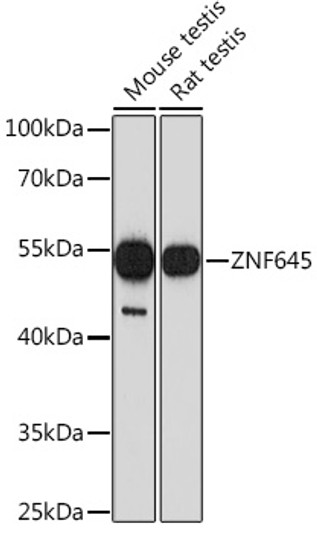| Tissue Specificity | Predominantly expressed in adult brain. Detected also in retinoic acid-differentiated SH-SY5Y cells. Specifically expressed in circumvallate taste bud cells. |
| Post Translational Modifications | N-glycosylated. Assembly with CALHM3 is associated with N-glycan remodeling and formation of hybrid complex- and high mannose-type glycochains. This N-glycan processing regulates channel trafficking and gating kinetics. Palmitoylated by ZDHHC3, ZDHHC20 and possibly ZDHHC7. Palmitoylation regulates voltage-dependent gating of the channel by shifting it toward more depolarized potentials. |
| Function | Pore-forming subunit of gustatory voltage-gated ion channels required for sensory perception of sweet, bitter and umami tastes. With CALHM3 forms a fast-activating voltage-gated ATP-release channel in type II taste bud cells, ATP acting as a neurotransmitter to activate afferent neural gustatory pathways. Acts both as a voltage-gated and calcium-activated ion channel: mediates neuronal excitability in response to membrane depolarization and low extracellular Ca(2+) concentration. Has poor ion selectivity and forms a wide pore (around 14 Angstroms) that mediates permeation of small ions including Ca(2+), Na(+), K(+) and Cl(-), as well as larger ions such as ATP(4-). Mediates Ca(2+) influx and downstream activation of the ERK1 and ERK2 cascade in neurons. Triggers endoplasmic reticulum stress by reducing the Ca(2+) content of the endoplasmic reticulum. May indirectly control amyloid precursor protein (APP) proteolysis and aggregated amyloid-beta (Abeta) peptides levels in a Ca(2+)-dependent manner. |
| Protein Name | Calcium Homeostasis Modulator Protein 1Protein Fam26c |
| Database Links | Reactome: R-HSA-9717207Reactome: R-HSA-9730628 |
| Cellular Localisation | Cell MembraneMulti-Pass Membrane ProteinEndoplasmic Reticulum MembraneBasolateral Cell MembraneColocalizes With Hspa5 At The Endoplasmic ReticulumLocalizes To The Basolateral Membrane Of Epithelial Cells Including Taste Cells |
| Alternative Antibody Names | Anti-Calcium Homeostasis Modulator Protein 1 antibodyAnti-Protein Fam26c antibodyAnti-CALHM1 antibodyAnti-FAM26C antibody |
Information sourced from Uniprot.org








![Immunofluorescence analysis of HeLa cells using [KO Validated] ANXA1 Rabbit polyclonal antibody (STJ22617) at dilution of 1:100 (40x lens). Secondary antibody: Cy3 Goat Anti-Rabbit IgG (H+L) at 1:500 dilution. Blue: DAPI for nuclear staining. Immunofluorescence analysis of HeLa cells using [KO Validated] ANXA1 Rabbit polyclonal antibody (STJ22617) at dilution of 1:100 (40x lens). Secondary antibody: Cy3 Goat Anti-Rabbit IgG (H+L) at 1:500 dilution. Blue: DAPI for nuclear staining.](https://cdn11.bigcommerce.com/s-zso2xnchw9/images/stencil/600x533/products/99133/383742/STJ22617_1__10539.1713152308.jpg?c=1)

![Western blot analysis of lysates from wild type (WT) and CDK7 knockout (KO) 293T cells, using [KO Validated] CDK7 Rabbit polyclonal antibody (STJ114808) at 1:1000 dilution. Secondary antibody: HRP Goat Anti-Rabbit IgG (H+L) (STJS000856) at 1:10000 dilution. Lysates/proteins: 25 Mu g per lane. Blocking buffer: 3% nonfat dry milk in TBST. Detection: ECL Basic Kit. Exposure time: 180s. Western blot analysis of lysates from wild type (WT) and CDK7 knockout (KO) 293T cells, using [KO Validated] CDK7 Rabbit polyclonal antibody (STJ114808) at 1:1000 dilution. Secondary antibody: HRP Goat Anti-Rabbit IgG (H+L) (STJS000856) at 1:10000 dilution. Lysates/proteins: 25 Mu g per lane. Blocking buffer: 3% nonfat dry milk in TBST. Detection: ECL Basic Kit. Exposure time: 180s.](https://cdn11.bigcommerce.com/s-zso2xnchw9/images/stencil/600x533/products/93895/375110/STJ114808_1__03809.1713141794.jpg?c=1)